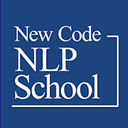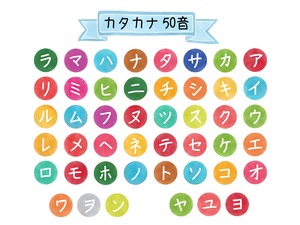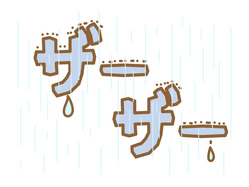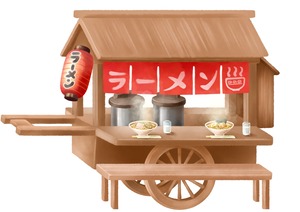NLP共同創始者ジョン・グリンダー博士は、NLPのマスタープラクティショナーを次のように定義づけています。
NLPプラクティショナーの必要条件をすでに満たし、その上で、NLPの卓越性の基本的パターンについて口頭で説明することができ、NLPの前身となっている分野の知的および歴史的背景についての一定の理解度を持ち、これらの基本的な適用パターンについて複数のバリエーションを使いこなせる人です。この最後の特徴は特に重要です。NLPの基本パターンについての複数のバリエーションを使いこなせるということは、マスタープラクティショナーは基本的パターンの書面に書かれてある順序から自分を解放する方向に大きなステップを踏み始めたことを意味しています。マスタープラクティショナーの行動は、NLPのパターン化原則に関して完全にクライアントの要求に焦点を合わせているので、クライアントの変化する要求をカリブレートしながら、一つのパターンの局面から他のパターンの局面に優雅に正確に移ることができます。
▶NLPプラクティショナーの定義
NLP共同創始者ジョン・グリンダー博士認定校
ニューコードNLPスクール
記事投稿日:2022/08/16
2019年11月
There are three types of characters in the Japanese language: hiragana, katakana, and kanji. Of these, kanji are the most numerous, and everyone understands that they are difficult to memorize. However, katakana is no less difficult, and when asked in what situations they use katakana or whether they consciously use katakana, even Japanese speakers often ask, "Oh, how did I use that?" I think that is often the case. In Japanese, katakana is often used in special phrases. The following are some examples of when katakana is used.
Role of Katakana
Japanese language is usually a combination of kanji and hiragana, but when katakana is used further, it is to make the sound of the word stand out and be pronounced more clearly than surrounding words. This allows us to show that the word is a different kind of word from others and has a special sound. Katakana is useful in that the timing can be freely adjusted depending on the person using it.
◎Use to emphasize the word itself
Sorry I'm late!(ごめん)
SORRY I'm late!(ゴメン)
⇒Use katakana to change the nuance.
Don't be late!(駄目)
You mustn't be late.(ダメ)
⇒The nuance is changed by using katakana.
Where is the item in question?(品物)
Where is the item in question?(ブツ)
⇒The meaning is changed to a special meaning by using katakana.
The recommendation of this month is the Akinatai fish set meal.(おすすめ)
The "recommendation for this month is the Akinoto fish set meal”.(オススメ)
⇒The nuance changes by using katakana.
As described above, katakana has a mysterious power. It is interesting that katakana has the mysterious power to change the impression just by using katakana.
The following content is shown on a separate page.
Mysteries of Katakana: Usage and Timing
◎Used to express foreign words
◎Used to express onomatopoeia and mimetic words
◎Used to describe the names of animals and plants
◎Use onomatopoeic and mimetic words when making them stand out.
◎Use to emphasize the word itself
日本語の中で、カタカナは、特殊な言い回しの際に使われることが多いです。まずは、どのようなときにカタカナが使われるのか、その例を下記にいくつかご紹介します。
カタカナの役割
日本語は漢字とひらがなを組み合わせて使うのが通常ですが、さらにカタカナを使う場合、その単語の音を目立たせたり、周囲の単語よりもはっきり発音させたりすることにあります。これにより、他とは異なる種類の言葉であり、音も特別であることを示せるようになります。カタカナは、使う人によって自由にタイミングを調整できるのが便利な点であると言えるでしょう。
◎単語そのものを強調するときに使う
・「遅くなってごめんね!」
・「遅くなってゴメンね!」
⇒カタカナにすることでニュアンスが変わる。
・「遅れちゃ駄目ですよ」
・「遅れちゃダメですよ」
⇒カタカナにすることでニュアンスが変わる。
・「例の品物はどこにありますか?」
・「例のブツはどこにありますか?」
⇒音読み+カタカナ表記で特殊な意味に変わる。
・「今月のおすすめは秋刀魚定食です」
・「今月のオススメは秋刀魚定食です」
⇒カタカナにすることでニュアンスが変わる。
以上のように、カタカナには不思議な力があります。カタカナを使用するだけで印象を変えることができる不思議な力があるのが面白いですね。
以下に示す内容は、別のページでまとめています。
カタカナの使い方とタイミング
◎外来語をあらわすときに使う
◎擬声語や擬態語をあらわすときに使う
◎動物や植物の名前をあらわすときに使う
カタカナの役割
◎擬声語や擬態語を目立たせるときに使う
◎単語そのものを強調するときに使う
NLP共同創始者ジョン・グリンダー博士認定校
ニューコードNLPスクール
記事更新日:2023/07/31
日本語の中で、カタカナは、特殊な言い回しの際に使われることが多いです。まずは、どのようなときにカタカナが使われるのか、その例を下記にいくつかご紹介します。
カタカナの役割
日本語は漢字とひらがなを組み合わせて使うのが通常ですが、さらにカタカナを使う場合、その単語の音を目立たせたり、周囲の単語よりもはっきり発音させたりすることにあります。これにより、他とは異なる種類の言葉であり、音も特別であることを示せるようになります。カタカナは、使う人によって自由にタイミングを調整できるのが便利な点であると言えるでしょう。
◎単語そのものを強調するときに使う
・「遅くなってごめんね!」
・「遅くなってゴメンね!」
⇒カタカナにすることでニュアンスが変わる。
・「遅れちゃ駄目ですよ」
・「遅れちゃダメですよ」
⇒カタカナにすることでニュアンスが変わる。
・「例の品物はどこにありますか?」
・「例のブツはどこにありますか?」
⇒音読み+カタカナ表記で特殊な意味に変わる。
・「今月のおすすめは秋刀魚定食です」
・「今月のオススメは秋刀魚定食です」
⇒カタカナにすることでニュアンスが変わる。
以上のように、カタカナには不思議な力があります。カタカナを使用するだけで印象を変えることができる不思議な力があるのが面白いですね。
以下に示す内容は、別のページでまとめています。
カタカナの使い方とタイミング
◎外来語をあらわすときに使う
◎擬声語や擬態語をあらわすときに使う
◎動物や植物の名前をあらわすときに使う
カタカナの役割
◎擬声語や擬態語を目立たせるときに使う
◎単語そのものを強調するときに使う
Mysteries of Katakana: Usage and Timing(5)
There
are three types of characters in the Japanese language: hiragana, katakana, and
kanji. Of these, kanji are the most numerous, and everyone understands that
they are difficult to memorize. However, katakana is no less difficult, and
when asked in what situations they use katakana or whether they consciously use
katakana, even Japanese speakers often ask, "Oh, how did I use that?"
I think that is often the case. In Japanese, katakana is often used in special
phrases. The following are some examples of when katakana is used.
Role of Katakana
Japanese language is usually a combination of kanji and hiragana, but when katakana is used further, it is to make the sound of the word stand out and be pronounced more clearly than surrounding words. This allows us to show that the word is a different kind of word from others and has a special sound. Katakana is useful in that the timing can be freely adjusted depending on the person using it.
◎Use to emphasize the word itself
Sorry I'm late!(ごめん)
SORRY I'm late!(ゴメン)
⇒Use katakana to change the nuance.
Don't be late!(駄目)
You mustn't be late.(ダメ)
⇒The nuance is changed by using katakana.
Where is the item in question?(品物)
Where is the item in question?(ブツ)
⇒The meaning is changed to a special meaning by using katakana.
The recommendation of this month is the Akinatai fish set meal.(おすすめ)
The "recommendation for this month is the Akinoto fish set meal”.(オススメ)
⇒The nuance changes by using katakana.
As described above, katakana has a mysterious power. It is interesting that katakana has the mysterious power to change the impression just by using katakana.
The following content is shown on a separate page.
Mysteries of Katakana: Usage and Timing
◎Used to express foreign words
◎Used to express onomatopoeia and mimetic words
◎Used to describe the names of animals and plants
◎Use onomatopoeic and mimetic words when making them stand out.
◎Use to emphasize the word itself
NLP共同創始者ジョン・グリンダー博士認定校
ニューコードNLPスクール
記事更新日:2023/07/31
There are three types of characters in the Japanese language: hiragana, katakana, and kanji. Of these, kanji are the most numerous, and everyone understands that they are difficult to memorize. However, katakana is no less difficult, and when asked in what situations they use katakana or whether they consciously use katakana, even Japanese speakers often ask, "Oh, how did I use that?" I think that is often the case. In Japanese, katakana is often used in special phrases. The following are some examples of when katakana is used.
Role of Katakana
Japanese language is usually a combination of kanji and hiragana, but when katakana is used further, it is to make the sound of the word stand out and be pronounced more clearly than surrounding words. This allows us to show that the word is a different kind of word from others and has a special sound. Katakana is useful in that the timing can be freely adjusted depending on the person using it.
◎Use onomatopoeic and mimetic words when making them stand out.
My room looks much nicer now that I've gotten rid of the unused items.(sukkiri)
I zap the Chinese cabbage for the chanko-nabe.(zakkuri)
The new dried laver is crispy.(pari)
His words made my head explode.(kachinn)
I'm off work today, so I'm just relaxing at home.(goro goro)
I ran rythmical. (tatt tatt)
As described above, katakana has a mysterious power. It is interesting that katakana has the mysterious power to change the impression just by using katakana.
The following content is shown on a separate page.
Mysteries of Katakana: Usage and Timing
◎Used to express foreign words
◎Used to express onomatopoeia and mimetic words
◎Used to describe the names of animals and plants
◎Use onomatopoeic and mimetic words when making them stand out.
◎Use to emphasize the word itself
日本語の中で、カタカナは、特殊な言い回しの際に使われることが多いです。まずは、どのようなときにカタカナが使われるのか、その例を下記にいくつかご紹介します。
カタカナの役割
日本語は漢字とひらがなを組み合わせて使うのが通常ですが、さらにカタカナを使う場合、その単語の音を目立たせたり、周囲の単語よりもはっきり発音させたりすることにあります。これにより、他とは異なる種類の言葉であり、音も特別であることを示せるようになります。カタカナは、使う人によって自由にタイミングを調整できるのが便利な点であると言えるでしょう。
◎擬声語や擬態語を目立たせるときに使う
・「不用品を処分したら部屋がスッキリしました」
・「ちゃんこ鍋に入れる白菜はザックリ切ります」
・「新しい海苔はパリッとしています」
・「彼の言葉に頭がカチンときました」
・「今日は仕事が休みなので家でゴロゴロしています」
・「タッ、タッ、タッと走りました」
こうしてみると、外国の言葉をそのままカタカナに直しているのではなく、和製英語として馴染み、英語としてそれを話すと伝わらない単語が数多くあることに驚かされます。
以下に示す内容は、別のページでまとめています。
カタカナの使い方とタイミング
◎外来語をあらわすときに使う
◎擬声語や擬態語をあらわすときに使う
◎動物や植物の名前をあらわすときに使う
カタカナの役割
◎擬声語や擬態語を目立たせるときに使う
◎単語そのものを強調するときに使う
NLP共同創始者ジョン・グリンダー博士認定校
ニューコードNLPスクール
記事更新日:2023/07/31
日本語の中で、カタカナは、特殊な言い回しの際に使われることが多いです。まずは、どのようなときにカタカナが使われるのか、その例を下記にいくつかご紹介します。
カタカナの役割
日本語は漢字とひらがなを組み合わせて使うのが通常ですが、さらにカタカナを使う場合、その単語の音を目立たせたり、周囲の単語よりもはっきり発音させたりすることにあります。これにより、他とは異なる種類の言葉であり、音も特別であることを示せるようになります。カタカナは、使う人によって自由にタイミングを調整できるのが便利な点であると言えるでしょう。
◎擬声語や擬態語を目立たせるときに使う
・「不用品を処分したら部屋がスッキリしました」
・「ちゃんこ鍋に入れる白菜はザックリ切ります」
・「新しい海苔はパリッとしています」
・「彼の言葉に頭がカチンときました」
・「今日は仕事が休みなので家でゴロゴロしています」
・「タッ、タッ、タッと走りました」
こうしてみると、外国の言葉をそのままカタカナに直しているのではなく、和製英語として馴染み、英語としてそれを話すと伝わらない単語が数多くあることに驚かされます。
以下に示す内容は、別のページでまとめています。
カタカナの使い方とタイミング
◎外来語をあらわすときに使う
◎擬声語や擬態語をあらわすときに使う
◎動物や植物の名前をあらわすときに使う
カタカナの役割
◎擬声語や擬態語を目立たせるときに使う
◎単語そのものを強調するときに使う
Mysteries of Katakana: Usage and Timing(4)
There are three types of characters in the Japanese language: hiragana, katakana, and kanji. Of these, kanji are the most numerous, and everyone understands that they are difficult to memorize. However, katakana is no less difficult, and when asked in what situations they use katakana or whether they consciously use katakana, even Japanese speakers often ask, "Oh, how did I use that?" I think that is often the case. In Japanese, katakana is often used in special phrases. The following are some examples of when katakana is used.
Role of Katakana
Japanese language is usually a combination of kanji and hiragana, but when katakana is used further, it is to make the sound of the word stand out and be pronounced more clearly than surrounding words. This allows us to show that the word is a different kind of word from others and has a special sound. Katakana is useful in that the timing can be freely adjusted depending on the person using it.
◎Use onomatopoeic and mimetic words when making them stand out.
My room looks much nicer now that I've gotten rid of the unused items.(sukkiri)
I zap the Chinese cabbage for the chanko-nabe.(zakkuri)
The new dried laver is crispy.(pari)
His words made my head explode.(kachinn)
I'm off work today, so I'm just relaxing at home.(goro goro)
I ran rythmical. (tatt tatt)
As described above, katakana has a mysterious power. It is interesting that katakana has the mysterious power to change the impression just by using katakana.
The following content is shown on a separate page.
Mysteries of Katakana: Usage and Timing
◎Used to express foreign words
◎Used to express onomatopoeia and mimetic words
◎Used to describe the names of animals and plants
◎Use onomatopoeic and mimetic words when making them stand out.
◎Use to emphasize the word itself

NLP共同創始者ジョン・グリンダー博士認定校
ニューコードNLPスクール
記事更新日:2023/07/31
There are three types of characters in the Japanese language: hiragana, katakana, and kanji. Of these, kanji are the most numerous, and everyone understands that they are difficult to memorize. However, katakana is no less difficult, and when asked in what situations they use katakana or whether they consciously use katakana, even Japanese speakers often ask, "Oh, how did I use that?" I think that is often the case. In Japanese, katakana is often used in special phrases. The following are some examples of when katakana is used.
Used to describe the names of animals and plants
・dog(inu)
・cat(neko)
・crow(karasu)
・beetle(kabutomushi)
・panda(pannda)
・tulip(tyu-lippu)
・sweet Pea(sui-topi-)
・hibiscus(haibisukasu)
The following content is shown on a separate page.
Mysteries of Katakana: Usage and Timing
◎Used to express foreign words
◎Used to express onomatopoeia and mimetic words
◎Used to describe the names of animals and plants
◎Use onomatopoeic and mimetic words when making them stand out.
◎Use to emphasize the word itself
日本語の中で、カタカナは、特殊な言い回しの際に使われることが多いです。まずは、どのようなときにカタカナが使われるのか、その例を下記にいくつかご紹介します。
動物や植物の名前をあらわすときに使う
カタカナ語は、擬声語や擬態語によく使われます。自然界に生じる種々の音や声を言語音で模写した語を擬声語、自然界に生起するさまざまな状態を言語音で模写した語を擬態語と呼びます。
・「ネコ」
・「カラス」
・「カブトムシ」
・「パンダ」
・「チューリップ」
・「スイートピー」
・「ハイビスカス」
以下に示す内容は、別のページでまとめています。
カタカナの使い方とタイミング
◎外来語をあらわすときに使う
◎擬声語や擬態語をあらわすときに使う
◎動物や植物の名前をあらわすときに使う
カタカナの役割
◎擬声語や擬態語を目立たせるときに使う
◎単語そのものを強調するときに使う
NLP共同創始者ジョン・グリンダー博士認定校
ニューコードNLPスクール
記事更新日:2023/07/31
日本語の中で、カタカナは、特殊な言い回しの際に使われることが多いです。まずは、どのようなときにカタカナが使われるのか、その例を下記にいくつかご紹介します。
動物や植物の名前をあらわすときに使う
カタカナ語は、擬声語や擬態語によく使われます。自然界に生じる種々の音や声を言語音で模写した語を擬声語、自然界に生起するさまざまな状態を言語音で模写した語を擬態語と呼びます。
・「イヌ」
・「ネコ」
・「カラス」
・「カブトムシ」
・「パンダ」
・「チューリップ」
・「スイートピー」
・「ハイビスカス」
以下に示す内容は、別のページでまとめています。
カタカナの使い方とタイミング
◎外来語をあらわすときに使う
◎擬声語や擬態語をあらわすときに使う
◎動物や植物の名前をあらわすときに使う
カタカナの役割
◎擬声語や擬態語を目立たせるときに使う
◎単語そのものを強調するときに使う

Mysteries of Katakana: Usage and Timing(3)
There
are three types of characters in the Japanese language: hiragana, katakana, and
kanji. Of these, kanji are the most numerous, and everyone understands that
they are difficult to memorize. However, katakana is no less difficult, and
when asked in what situations they use katakana or whether they consciously use
katakana, even Japanese speakers often ask, "Oh, how did I use that?"
I think that is often the case. In Japanese, katakana is often used in special
phrases. The following are some examples of when katakana is used.
Used to describe the names of animals and plants
・dog(inu)
・cat(neko)
・crow(karasu)
・beetle(kabutomushi)
・panda(pannda)
・tulip(tyu-lippu)
・sweet Pea(sui-topi-)
・hibiscus(haibisukasu)
The following content is shown on a separate page.
Mysteries of Katakana: Usage and Timing
◎Used to express foreign words
◎Used to express onomatopoeia and mimetic words
◎Used to describe the names of animals and plants
◎Use onomatopoeic and mimetic words when making them stand out.
◎Use to emphasize the word itself

NLP共同創始者ジョン・グリンダー博士認定校
ニューコードNLPスクール

記事更新日:2023/07/31
There are three types of characters in the Japanese language: hiragana, katakana, and kanji. Of these, kanji are the most numerous, and everyone understands that they are difficult to memorize. However, katakana is no less difficult, and when asked in what situations they use katakana or whether they consciously use katakana, even Japanese speakers often ask, "Oh, how did I use that?" I think that is often the case. In Japanese, katakana is often used in special phrases. The following are some examples of when katakana is used.
Used to express onomatopoeia and mimetic words
Katakana words are often used for onomatopoeia and mimetic words. Onomatopoeic words are words that imitate various sounds and voices that occur in the natural world, and onomatopoeic words are words that imitate various states that occur in the natural world by using linguistic sounds.
<Onomatopoeic words>
・It's raining like crazy. (za-za-)
・A dog is barking.(wann wann)
・There is a banging sound at the door.(tonn tonn)
・There was an explosion. (bonn)
<Mimetic words>
・The floor is slippery.(tsuru tsuru)
・The stars are twinkling.(kira kira)
・Clothes are falling to pieces.(boro boro)
・I am excited to travel abroad for the first time.(waku waku)
The following content is shown on a separate page.
Mysteries of Katakana: Usage and Timing
◎Used to express foreign words
◎Used to express onomatopoeia and mimetic words
◎Used to describe the names of animals and plants
◎Use onomatopoeic and mimetic words when making them stand out.
◎Use to emphasize the word itself
カタカナの不思議「カタカナの使い方とタイミング」(2)
日本語の中で、カタカナは、特殊な言い回しの際に使われることが多いです。まずは、どのようなときにカタカナが使われるのか、その例を下記にいくつかご紹介します。
擬声語や擬態語をあらわすときに使う
カタカナ語は、擬声語や擬態語によく使われます。自然界に生じる種々の音や声を言語音で模写した語を擬声語、自然界に生起するさまざまな状態を言語音で模写した語を擬態語と呼びます。
〈擬声語〉
・「雨がザーザー降っている」
・「犬がワンワン吠えている」
・「扉をトントン叩く音がする」
・「ボン!と爆発音がしました」
〈擬態語〉
・「床がツルツルしている」
・「星がキラキラ輝く」
・「服がボロボロになりました」
・「初めての海外旅行ににワクワクしています」
以下に示す内容は、別のページでまとめています。
カタカナの使い方とタイミング
◎外来語をあらわすときに使う
◎擬声語や擬態語をあらわすときに使う
◎動物や植物の名前をあらわすときに使う
カタカナの役割
◎擬声語や擬態語を目立たせるときに使う
◎単語そのものを強調するときに使う
NLP共同創始者ジョン・グリンダー博士認定校
ニューコードNLPスクール
記事更新日:2023/07/31
日本語の中で、カタカナは、特殊な言い回しの際に使われることが多いです。まずは、どのようなときにカタカナが使われるのか、その例を下記にいくつかご紹介します。
擬声語や擬態語をあらわすときに使う
カタカナ語は、擬声語や擬態語によく使われます。自然界に生じる種々の音や声を言語音で模写した語を擬声語、自然界に生起するさまざまな状態を言語音で模写した語を擬態語と呼びます。
〈擬声語〉
・「雨がザーザー降っている」
・「犬がワンワン吠えている」
・「扉をトントン叩く音がする」
・「ボン!と爆発音がしました」
〈擬態語〉
・「床がツルツルしている」
・「星がキラキラ輝く」
・「服がボロボロになりました」
・「初めての海外旅行ににワクワクしています」
以下に示す内容は、別のページでまとめています。
カタカナの使い方とタイミング
◎外来語をあらわすときに使う
◎擬声語や擬態語をあらわすときに使う
◎動物や植物の名前をあらわすときに使う
カタカナの役割
◎擬声語や擬態語を目立たせるときに使う
◎単語そのものを強調するときに使う

Mysteries of Katakana: Usage and Timing(2)
There
are three types of characters in the Japanese language: hiragana, katakana, and
kanji. Of these, kanji are the most numerous, and everyone understands that
they are difficult to memorize. However, katakana is no less difficult, and
when asked in what situations they use katakana or whether they consciously use
katakana, even Japanese speakers often ask, "Oh, how did I use that?"
I think that is often the case. In Japanese, katakana is often used in special
phrases. The following are some examples of when katakana is used.
Used to express onomatopoeia and mimetic words
Katakana words are often used for onomatopoeia and mimetic words. Onomatopoeic words are words that imitate various sounds and voices that occur in the natural world, and onomatopoeic words are words that imitate various states that occur in the natural world by using linguistic sounds.
<Onomatopoeic words>
・It's raining like crazy. (za-za-)
・A dog is barking.(wann wann)
・There is a banging sound at the door.(tonn tonn)
・There was an explosion. (bonn)
<Mimetic words>
・The floor is slippery.(tsuru tsuru)
・The stars are twinkling.(kira kira)
・Clothes are falling to pieces.(boro boro)
・I am excited to travel abroad for the first time.(waku waku)
The following content is shown on a separate page.
Mysteries of Katakana: Usage and Timing
◎Used to express foreign words
◎Used to express onomatopoeia and mimetic words
◎Used to describe the names of animals and plants
◎Use onomatopoeic and mimetic words when making them stand out.
◎Use to emphasize the word itself

NLP共同創始者ジョン・グリンダー博士認定校
ニューコードNLPスクール

記事更新日:2023/07/31
There are three types of characters in the Japanese language: hiragana, katakana, and kanji. Of these, kanji are the most numerous, and everyone understands that they are difficult to memorize. However, katakana is no less difficult, and when asked in what situations they use katakana or whether they consciously use katakana, even Japanese speakers often ask, "Oh, how did I use that?" I think that is often the case. In Japanese, katakana is often used in special phrases. The following are some examples of when katakana is used.
Used to express foreign words
Foreign words that have entered the Japanese language are called Gairaigo. Chinese words from China can also be considered Gairaigo, but in Japan, they mainly refer to words from Europe and the United States. Tempura and castella were originally Dutch words, but as they are often treated like Japanese words, most katakana words are foreign words that have been interpreted as sounds and put into letters.
Another characteristic of the Japanese language is that when English words are modified into katakana words, they are represented as a single set of consonants and vowels.
For example, when the English word "test" is modified into katakana, it is interesting to note that it is expressed by breaking it down into a set of consonants and vowels, as in "te su to".
<Examples of foreign words in katakana>
・pen (English) ⇒ “penn"
・post (English) ⇒ “posuto"
・soup (English) ⇒ "su-pu”
・banana (English) ⇒ "banana”
・cake (English) ⇒ "ke-ki”
・tabaco (Portuguese) ⇒ "tabako”
・copo (Portuguese) => "coppu”
・pao (Portuguese) ⇒ "pann”
・juice (English) ⇒ "ju-cu”
・sale (English) ⇒ "sa-le”
・test (English) ⇒ "tesuto”
・light (English) ⇒ "laito”
・pack (English) ⇒ "pakku”
・swearer (English) ⇒ "se-ta-“
・lens (English) ⇒ "lenzu"
・modern (English) ⇒ "modann”
・mark (English) ⇒ "ma-ku"
・course(English) ⇒ "co-su”
・bottle(English) ⇒ "botolu”
・risk(English) ⇒ “risuku”
・stress (English) ⇒ "sutoresu”
・stretch(English) ⇒ "sutoretti"
・slipper (English) ⇒ "slippa"
・spoon (English) ⇒ "supu-nn"
・restaurand (English) ⇒ "resutorann"
・pattern (English) ⇒ "pata-nn”
・machine(English) ⇒ "misinn”
・cleaning (English) ⇒ "kuri-ninngu”
<Examples of shortened foreign words>
・capacity (English) ⇒ “kyapacitei-" ⇒ “kyapa"
・asparagus (English) ⇒ "asuparagasu" ⇒ “asupara"
・basketball(English) ⇒ “basukettobo-ru" ⇒ "basuke"
・collaboration(English) ⇒ "colaboraishyonn" ⇒ “colabo"
・handkerchief (English)=> “hannkachi-fu" => “hannkachi"
・helicopter(English)⇒”helikoputa-“⇒”heli"
・building(English) ⇒ “biludeinngu”⇒”bilu"
・rehabilitation (English) ⇒ “rehabilite-shyonn" ⇒ “rehabili"
・re-structuring(English)⇒ “risutorakucharinngu" => “risutora"
・inflation(English) ⇒ "innfulaishyonn" ⇒ "innfule"
・deflation (English) ⇒ “defulaishyonn" ⇒ “defule"
・application(English) ⇒ “apulike-shyonn" => "apuli"
・appointment(English) ⇒ "apoinntomennto" ⇒ “apo"
・reschedule(English) ⇒ “risukezyu-ru" ⇒ "risuche"
・electric guitar (English) ⇒ "elecutorikku gita-" ⇒ “eleki"
・convenience store(English) ⇒ “Connbiniennsu sutoa" ⇒ “connbini"
・air conditioner(English) ⇒ “ea conndeisyona-" ⇒ “eaconn"
・internet (English) ⇒ “inta-netto" ⇒ “netto"
・smartphone (English) ⇒ “suma-tofonn" ⇒ “sumaho"
・power point (English) ⇒ “pawa- poinnto" ⇒ “pawapo"
・personal computer(English) ⇒ “pa-sonalu connpyu-ta-" ⇒ “pasokonn"
・cost performance(English) ⇒ “cosuto pafo-mannsu" ⇒ “cosupa"
・off the record (English) ⇒ “ofu za reko-do" ⇒ “ofu reko"
<Japanized English>
・fried potato (Furaido toteto) ⇒ "french fries" (English)
・salary man (salari- mann) ⇒ "office worker" (English)
・pet bottle (petto botolu) ⇒ "plastic bottle" (English)
・gasoline stand (gasorinn sutanndo) ⇒ "gas station" (English)
・lip balm (lippu curi-mu) ⇒ chapstick (English)
・chou cream (syu-kuri-mu) ⇒ cream puff (French + English)
・hot cake (hotto ke-ki) ⇒ pancake (English)
・doctor's stop (dokuta- sutoppu) ⇒ doctor's orders (English)
<Chinese origin>
・ramen (ra-menn) ⇒ ramen “拉麺” (Chinese)
The following content is shown on a separate page.
Mysteries of Katakana: Usage and Timing
◎Used to express foreign words
◎Used to express onomatopoeia and mimetic words
◎Used to describe the names of animals and plants
◎Use onomatopoeic and mimetic words when making them stand out.
◎Use to emphasize the word itself

カタカナの不思議「カタカナの使い方とタイミング」(1)
日本語の中で、カタカナは、特殊な言い回しの際に使われることが多いです。まずは、どのようなときにカタカナが使われるのか、その例を下記にいくつかご紹介します。
外来語をあらわすときに使う
日本語の中に入ってきた外国語の単語を外来語といいます。中国語から入ってきた漢語も外来語といえますが、日本ではおもに欧米から入ったものを指すことが多いです。天ぷらやカステラは元々オランダの言葉でありましたが、日本語のように扱われることが多いように、カタカナ語の多くは外来語の単語を音として解釈し、文字に落とし込んだものがほとんどです。
また、日本語の特性として、英単語をカタカナ語に修正する場合は、子音と母音が1セットになった形で表されるという特徴があります。例えば、「test」という英単語をカタカナ語に直す場合は「te su to」というように、子音と母音のセットに分解されて表現されるのが興味深い点で、その点にも注目してみましょう。
〈外来語がカタカナになった例〉
・pen(英語)⇒「ペン」
・post(英語)⇒「ポスト」
・soup(英語)⇒「スープ」
・banana(英語)⇒「バナナ」
・cake(英語)⇒「ケーキ」
・tabaco(ポルトガル語)⇒「タバコ」
・copo(ポルトガル語)⇒「コップ」
・pao(ポルトガル語)⇒「パン」
・juice(英語)⇒「ジュース」
・sale(英語)⇒「セール」
・test(英語)⇒「テスト」
・light(英語)⇒「ライト」
・pack(英語)⇒「パック」
・swearer(英語)⇒「セーター」
・lens(英語)⇒「レンズ」
・modern(英語)⇒「モダン」
・mark(英語)⇒「マーク」
・seal(英語)⇒「シール」
・course(英語)⇒「コース」
・bottle(英語)⇒「ボトル」
・risk(英語)⇒「リスク」
・stress(英語)⇒「ストレス」
・stretch(英語)⇒「ストレッチ」
・slipper(英語)⇒「スリッパ」
・spoon(英語)⇒「スプーン」
・restaurand(英語)⇒「レストラン」
・pattern(英語)⇒「パターン」
・machine(英語)⇒「ミシン」
・cleaning(英語)⇒「クリーニング」
〈外来語が短縮された例〉
・capacity(英語)⇒「キャパシティ」⇒「キャパ」
・asparagus(英語)⇒「アスパラガス」⇒「アスパラ」
・baskettball(英語)⇒「バスケットボール」⇒「バスケ」
・collaboration(英語)⇒「コラボレーション」⇒「コラボ」
・handkerchief(英語)⇒「ハンカチーフ」⇒「ハンカチ」
・helicopter(英語)⇒「ヘリコプター」⇒「ヘリ」
・building(英語)⇒「ビルディング」⇒「ビル」
・rehabilitation(英語)⇒「リハビリテーション」⇒「リハビリ」
・re-structuring(英語)⇒「リストラクチャリング」⇒「リストラ」
・inflation(英語)⇒「インフレーション」⇒「インフレ」
・deflation(英語)⇒「デフレーション」⇒「デフレ」
・application(英語)⇒「アプリケーション」⇒「アプリ」
・appointment(英語)⇒「アポイントメント」⇒「アポ」
・reschedule(英語)⇒「リスケジュール」⇒「リスケ」
・electric guitar(英語)⇒「エレクトリック・ギター」⇒「エレキ」
・convenience store(英語)⇒「コンビニエンス・ストア」⇒「コンビニ」
・air conditioner(英語)⇒「エアー・コンディショナー」⇒「エアコン」
・internet(英語)⇒「インターネット」⇒「ネット」
・smartphone(英語)⇒「スマートフォン」⇒「スマホ」
・power point(英語)⇒「パワーポイント」⇒「パワポ」
・personal computer(英語)⇒「パーソナル・コンピューター」⇒「パソコン」
・cost performance(英語)⇒「コスト・パフォーマンス」⇒「コスパ」
・off the record(英語)⇒「オフ・ザ・レコード」⇒「オフレコ」
〈和製英語〉
・「フライドポテト」⇒french fries(英語)
・「サラリーマン」⇒office worker(英語)
・「ペットボトル」⇒plastic bottle(英語)
・「ガソリンスタンド」⇒gas station(英語)
・「リップクリーム」⇒chapstick(英語)
・「シュークリーム」⇒cream puff(フランス語+英語)
・「ホットケーキ」⇒pancake(英語)
・「ドクターストップ」⇒doctor's orders
〈中国語由来〉
・「ラーメン」⇒拉麺
こうしてみると、外国の言葉をそのままカタカナに直しているのではなく、和製英語として馴染み、英語としてそれを話すと伝わらない単語が数多くあることに驚かされます。
以下に示す内容は、別のページでまとめています。
カタカナの使い方とタイミング
◎外来語をあらわすときに使う
◎擬声語や擬態語をあらわすときに使う
◎動物や植物の名前をあらわすときに使う
カタカナの役割
◎擬声語や擬態語を目立たせるときに使う
◎単語そのものを強調するときに使う
NLP共同創始者ジョン・グリンダー博士認定校
ニューコードNLPスクール

記事更新日:2023/07/31
日本語の中で、カタカナは、特殊な言い回しの際に使われることが多いです。まずは、どのようなときにカタカナが使われるのか、その例を下記にいくつかご紹介します。
外来語をあらわすときに使う
日本語の中に入ってきた外国語の単語を外来語といいます。中国語から入ってきた漢語も外来語といえますが、日本ではおもに欧米から入ったものを指すことが多いです。天ぷらやカステラは元々オランダの言葉でありましたが、日本語のように扱われることが多いように、カタカナ語の多くは外来語の単語を音として解釈し、文字に落とし込んだものがほとんどです。
また、日本語の特性として、英単語をカタカナ語に修正する場合は、子音と母音が1セットになった形で表されるという特徴があります。例えば、「test」という英単語をカタカナ語に直す場合は「te su to」というように、子音と母音のセットに分解されて表現されるのが興味深い点で、その点にも注目してみましょう。
〈外来語がカタカナになった例〉
・pen(英語)⇒「ペン」
・post(英語)⇒「ポスト」
・soup(英語)⇒「スープ」
・banana(英語)⇒「バナナ」
・cake(英語)⇒「ケーキ」
・tabaco(ポルトガル語)⇒「タバコ」
・copo(ポルトガル語)⇒「コップ」
・pao(ポルトガル語)⇒「パン」
・juice(英語)⇒「ジュース」
・sale(英語)⇒「セール」
・test(英語)⇒「テスト」
・light(英語)⇒「ライト」
・pack(英語)⇒「パック」
・swearer(英語)⇒「セーター」
・lens(英語)⇒「レンズ」
・modern(英語)⇒「モダン」
・mark(英語)⇒「マーク」
・seal(英語)⇒「シール」
・course(英語)⇒「コース」
・bottle(英語)⇒「ボトル」
・risk(英語)⇒「リスク」
・stress(英語)⇒「ストレス」
・stretch(英語)⇒「ストレッチ」
・slipper(英語)⇒「スリッパ」
・spoon(英語)⇒「スプーン」
・restaurand(英語)⇒「レストラン」
・pattern(英語)⇒「パターン」
・machine(英語)⇒「ミシン」
・cleaning(英語)⇒「クリーニング」
〈外来語が短縮された例〉
・capacity(英語)⇒「キャパシティ」⇒「キャパ」
・asparagus(英語)⇒「アスパラガス」⇒「アスパラ」
・baskettball(英語)⇒「バスケットボール」⇒「バスケ」
・collaboration(英語)⇒「コラボレーション」⇒「コラボ」
・handkerchief(英語)⇒「ハンカチーフ」⇒「ハンカチ」
・helicopter(英語)⇒「ヘリコプター」⇒「ヘリ」
・building(英語)⇒「ビルディング」⇒「ビル」
・rehabilitation(英語)⇒「リハビリテーション」⇒「リハビリ」
・re-structuring(英語)⇒「リストラクチャリング」⇒「リストラ」
・inflation(英語)⇒「インフレーション」⇒「インフレ」
・deflation(英語)⇒「デフレーション」⇒「デフレ」
・application(英語)⇒「アプリケーション」⇒「アプリ」
・appointment(英語)⇒「アポイントメント」⇒「アポ」
・reschedule(英語)⇒「リスケジュール」⇒「リスケ」
・electric guitar(英語)⇒「エレクトリック・ギター」⇒「エレキ」
・convenience store(英語)⇒「コンビニエンス・ストア」⇒「コンビニ」
・air conditioner(英語)⇒「エアー・コンディショナー」⇒「エアコン」
・internet(英語)⇒「インターネット」⇒「ネット」
・smartphone(英語)⇒「スマートフォン」⇒「スマホ」
・power point(英語)⇒「パワーポイント」⇒「パワポ」
・personal computer(英語)⇒「パーソナル・コンピューター」⇒「パソコン」
・cost performance(英語)⇒「コスト・パフォーマンス」⇒「コスパ」
・off the record(英語)⇒「オフ・ザ・レコード」⇒「オフレコ」
〈和製英語〉
・「フライドポテト」⇒french fries(英語)
・「サラリーマン」⇒office worker(英語)
・「ペットボトル」⇒plastic bottle(英語)
・「ガソリンスタンド」⇒gas station(英語)
・「リップクリーム」⇒chapstick(英語)
・「シュークリーム」⇒cream puff(フランス語+英語)
・「ホットケーキ」⇒pancake(英語)
・「ドクターストップ」⇒doctor's orders
〈中国語由来〉
・「ラーメン」⇒拉麺
こうしてみると、外国の言葉をそのままカタカナに直しているのではなく、和製英語として馴染み、英語としてそれを話すと伝わらない単語が数多くあることに驚かされます。
以下に示す内容は、別のページでまとめています。
カタカナの使い方とタイミング
◎外来語をあらわすときに使う
◎擬声語や擬態語をあらわすときに使う
◎動物や植物の名前をあらわすときに使う
カタカナの役割
◎擬声語や擬態語を目立たせるときに使う
◎単語そのものを強調するときに使う
Mysteries of Katakana: Usage and Timing(1)
There
are three types of characters in the Japanese language: hiragana, katakana, and
kanji. Of these, kanji are the most numerous, and everyone understands that
they are difficult to memorize. However, katakana is no less difficult, and
when asked in what situations they use katakana or whether they consciously use
katakana, even Japanese speakers often ask, "Oh, how did I use that?"
I think that is often the case. In Japanese, katakana is often used in special
phrases. The following are some examples of when katakana is used.
Used to express foreign words
Foreign
words that have entered the Japanese language are called Gairaigo. Chinese
words from China can also be considered Gairaigo, but in Japan, they mainly
refer to words from Europe and the United States. Tempura and castella were
originally Dutch words, but as they are often treated like Japanese words, most
katakana words are foreign words that have been interpreted as sounds and put
into letters.
Another
characteristic of the Japanese language is that when English words are modified
into katakana words, they are represented as a single set of consonants and
vowels.
For
example, when the English word "test" is modified into katakana, it
is interesting to note that it is expressed by breaking it down into a set of
consonants and vowels, as in "te su to".
<Examples of foreign words in katakana>
・pen (English) ⇒ “penn"
・post (English) ⇒ “posuto"
・soup (English) ⇒ "su-pu”
・banana (English) ⇒ "banana”
・cake (English) ⇒ "ke-ki”
・tabaco (Portuguese) ⇒ "tabako”
・copo (Portuguese) => "coppu”
・pao (Portuguese) ⇒ "pann”
・juice (English) ⇒ "ju-cu”
・sale (English) ⇒ "sa-le”
・test (English) ⇒ "tesuto”
・light (English) ⇒ "laito”
・pack (English) ⇒ "pakku”
・swearer (English) ⇒ "se-ta-“
・lens (English) ⇒ "lenzu"
・modern (English) ⇒ "modann”
・mark (English) ⇒ "ma-ku"
・course(English) ⇒ "co-su”
・bottle(English) ⇒ "botolu”
・risk(English) ⇒ “risuku”
・stress (English) ⇒ "sutoresu”
・stretch(English) ⇒ "sutoretti"
・slipper (English) ⇒ "slippa"
・spoon (English) ⇒ "supu-nn"
・restaurand (English) ⇒ "resutorann"
・pattern (English) ⇒ "pata-nn”
・machine(English) ⇒ "misinn”
・cleaning (English) ⇒ "kuri-ninngu”
<Examples of shortened foreign words>
・capacity (English) ⇒ “kyapacitei-" ⇒ “kyapa"
・asparagus (English) ⇒ "asuparagasu" ⇒ “asupara"
・basketball(English) ⇒ “basukettobo-ru" ⇒ "basuke"
・collaboration(English) ⇒ "colaboraishyonn" ⇒ “colabo"
・handkerchief (English)=> “hannkachi-fu" => “hannkachi"
・helicopter(English)⇒”helikoputa-“⇒”heli"
・building(English) ⇒ “biludeinngu”⇒”bilu"
・rehabilitation (English) ⇒ “rehabilite-shyonn" ⇒ “rehabili"
・re-structuring(English)⇒ “risutorakucharinngu" => “risutora"
・inflation(English) ⇒ "innfulaishyonn" ⇒ "innfule"
・deflation (English) ⇒ “defulaishyonn" ⇒ “defule"
・application(English) ⇒ “apulike-shyonn" => "apuli"
・appointment(English) ⇒ "apoinntomennto" ⇒ “apo"
・reschedule(English) ⇒ “risukezyu-ru" ⇒ "risuche"
・electric guitar (English) ⇒ "elecutorikku gita-" ⇒ “eleki"
・convenience store(English) ⇒ “Connbiniennsu sutoa" ⇒ “connbini"
・air conditioner(English) ⇒ “ea conndeisyona-" ⇒ “eaconn"
・internet (English) ⇒ “inta-netto" ⇒ “netto"
・smartphone (English) ⇒ “suma-tofonn" ⇒ “sumaho"
・power point (English) ⇒ “pawa- poinnto" ⇒ “pawapo"
・personal computer(English) ⇒ “pa-sonalu connpyu-ta-" ⇒ “pasokonn"
・cost performance(English) ⇒ “cosuto pafo-mannsu" ⇒ “cosupa"
・off the record (English) ⇒ “ofu za reko-do" ⇒ “ofu reko"
<Japanized English>
・fried potato (Furaido toteto) ⇒ "french fries" (English)
・salary man (salari- mann) ⇒ "office worker" (English)
・pet bottle (petto botolu) ⇒ "plastic bottle" (English)
・gasoline stand (gasorinn sutanndo) ⇒ "gas station" (English)
・lip balm (lippu curi-mu) ⇒ chapstick (English)
・chou cream (syu-kuri-mu) ⇒ cream puff (French + English)
・hot cake (hotto ke-ki) ⇒ pancake (English)
・doctor's stop (dokuta- sutoppu) ⇒ doctor's orders (English)
<Chinese origin>
・ramen (ra-menn) ⇒ ramen “拉麺” (Chinese)
The following content is shown on a separate page.
Mysteries of Katakana: Usage and Timing
◎Used to express foreign words
◎Used to express onomatopoeia and mimetic words
◎Used to describe the names of animals and plants
◎Use onomatopoeic and mimetic words when making them stand out.
◎Use to emphasize the word itself

NLP共同創始者ジョン・グリンダー博士認定校
ニューコードNLPスクール

記事更新日:2023/07/31
- 今日:
- 昨日:
- 累計:




















































































